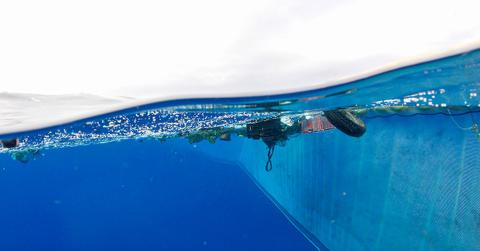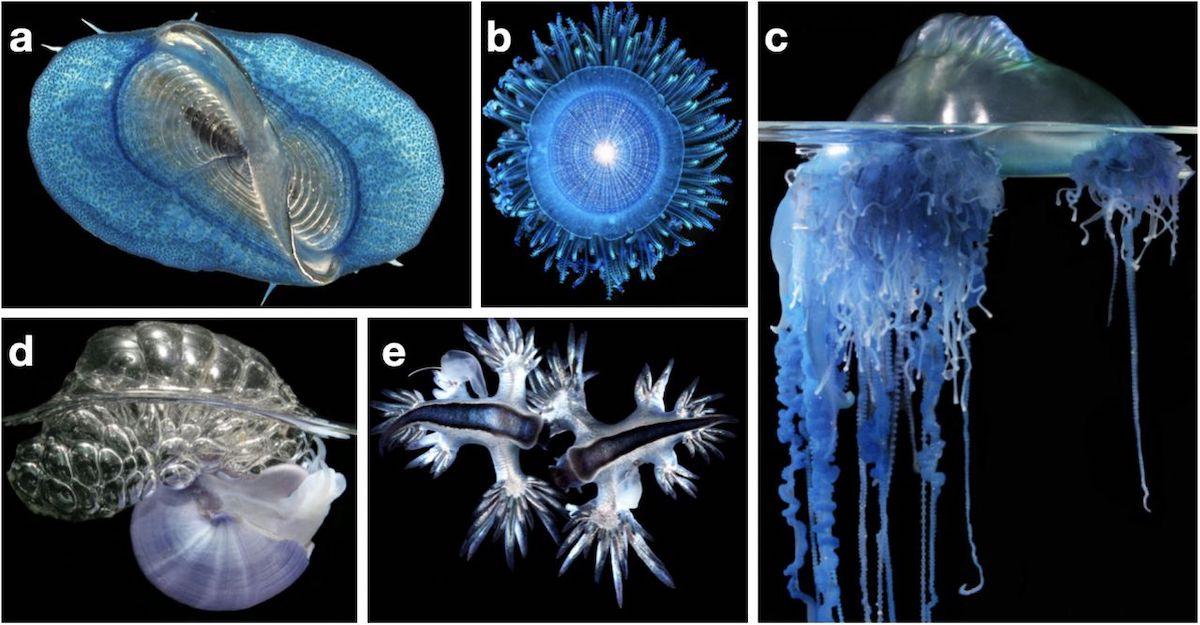It’s Alive! Animals Evidently Reside in the Great Pacific Garbage Patch
Published May 6 2022, 11:09 a.m. ET
If you aren't familiar with the Great Pacific Garbage Patch, it's one of the most notorious man-made ecological disasters on the planet. It's exactly what it sounds like — a massive concentration of marine debris, located in the North Pacific Ocean — which has been growing for an unknown number of decades.
And recently, a study found that certain species have made it their home. Yes, there is reportedly life in the Great Pacific Garbage Patch.
Yes, you heard that correctly — a category of surface-dwelling marine animals called neuston have made the patch their home.
“'Garbage Patches' may be overlooked areas of high neuston abundance, and could serve similar ecological roles to the North Atlantic Sargasso Sea, providing food and habitat for diverse species and valuable economic services," the study, which was published Friday, reads. "There is an urgent need to better understand these ecosystems and the impact of plastic debris."
"We found high concentrations of floating life and plastic in the NPGP, consistent with our hypothesis that this region may be a neuston sea," the report continued. "Ecological studies on the food webs and life history of neustonic species will allow us to better understand their temporal cycles and connectivity, and community science will help us better map life at the air-sea interface."
Research shows marine life resides in the Great Pacific Garbage Patch.
In 2019, French swimmer Benoit Lecomte made a powerful statement swimming through the Great Pacific Garbage Patch — and though he swam alone, he was accompanied by various types of neuston. Blue dragon nudibranchs, violet sea-snails, and Portuguese man o' wars were concentrated deep within the 79,000 tons of plastic, as opposed to outside of it, according to Futurism. This is major news for conservationists, as they assumed it was devoid of life.
“I had this hypothesis that gyres concentrate life and plastic in similar ways, but it was still really surprising to see just how much we found out there,” co-author of the study and UNC assistant professor, Rebecca Helm, told The New York Times. “The density was really staggering. To see them in that concentration was like, wow.”
Not only is the world's largest garbage patch now home to marine life, but evidence shows they may be reproducing within the patch.
Neuston tend to live in the open ocean along the surface, and they're often pretty hard to find. Little is known about how they survive, but this study is starting to reveal more information about them.
While some conservationists are taking this finding to mean we should stop trying to remove the garbage patch, as its essentially become a man-made ecosystem, others are still eager to get rid of it, as plastics that aren't consumed by unassuming animals break down into microplastics.
Should the Great Pacific Garbage Patch stay as it is, as a man-made ecosystem?
As previously mentioned, now that scientists have discovered animals living in the massive clump of ocean trash, many are debating if it would be wrong to remove it from the sea.
"Cleaning up in the middle of the ocean, with giant nets, may sound like a good idea, but it could be like bulldozing a meadow to clean up plastic bags. You're going to catch life in those nets, in fact, it's already happened...," Helm tweeted on April 29.
But many disagree.
Per The New York Times, Laurent Lebreton, an Ocean Cleanup Foundation oceanographer is one of many.
“It’s too early to reach any conclusions on how we should react to that study,” he said. “You have to take into account the effects of plastic pollution on other species. We are collecting several tons of plastic every week with our system — plastic that is affecting the environment.”
More research is to be done on the matter, but this is certainly a shocking discovery.

